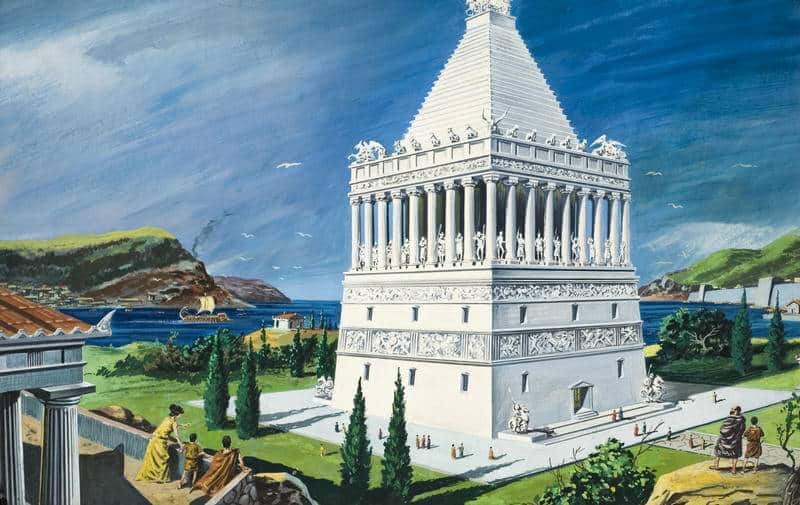
The Great Pyramid of Giza is one of the most iconic and well-preserved ancient monuments in the world, located on the Giza Plateau near Cairo, Egypt. It was constructed during the Fourth Dynasty of the Old Kingdom of Egypt, around 2580-2560 BCE, and originally stood at a height of 146.6 meters (481 feet). The pyramid was built for Pharaoh Khufu and is the largest of the three pyramids at Giza. Its precise construction methods remain a subject of debate, but it is believed to have been built using limestone and granite blocks, some of which weighed several tons. The Great Pyramid's enduring significance lies in its remarkable architecture, historical importance, and its status as one of the Seven Wonders of the Ancient World.

The Hanging Gardens of Babylon were one of the Seven Wonders of the Ancient World, believed to have been constructed in the ancient city of Babylon, near present-day Hillah, Babil, in Iraq. These remarkable gardens were commissioned by King Nebuchadnezzar II, who ruled Babylon around 600 BCE. Despite their fame, there is some debate among historians about their actual existence. According to historical accounts, the gardens featured terraced levels with lush vegetation and exotic plants, all supported by a complex system of irrigation and aqueducts. It was said that the gardens were built to please Nebuchadnezzar's wife, Amytis, who missed the green hills and gardens of her homeland, Media, and they served as a symbol of opulence and grandeur in the ancient world.

The Colossus of Rhodes was an enormous bronze statue that stood on the Greek island of Rhodes in the Mediterranean Sea. It was built in the 3rd century BCE to celebrate the island's victory over a Macedonian invasion. The statue was dedicated to the sun god Helios, who was also considered the protector of the island. Standing approximately 30 meters (98 feet) tall, the Colossus of Rhodes was one of the tallest statues of the ancient world. It was constructed using bronze plates over an iron frame and was a marvel of ancient engineering. Unfortunately, the statue stood for only a relatively short time, as it collapsed during an earthquake in 226 BCE, leading to its eventual destruction.

The Lighthouse of Alexandria, also known as the Pharos of Alexandria, was an ancient wonder of the world that stood as an architectural masterpiece on the island of Pharos, near the bustling city of Alexandria in Egypt. Built during the reign of Ptolemy II Philadelphus in the 3rd century BCE, this towering structure, standing at approximately 100-130 meters (330-430 feet) in height, served as a beacon of light for sailors navigating the Mediterranean, guiding them safely into Alexandria's vital harbor. Designed by the Greek architect Sostratus of Cnidus, the Pharos was not only a functional lighthouse but also a symbol of the city's wealth and cultural significance, adorned with impressive statues and intricate embellishments. Regrettably, the passage of time and the effects of earthquakes ultimately led to the gradual decline and eventual disappearance of this remarkable monument, yet its historical importance and architectural influence continue to be celebrated and remembered.

The Temple of Artemis, also known as the Artemision, was an ancient Greek temple dedicated to the goddess Artemis and located in the city of Ephesus, in present-day Turkey. It was one of the Seven Wonders of the Ancient World, celebrated for its immense size and architectural grandeur. The temple underwent multiple reconstructions over the centuries, with the most famous version, completed around 550 BCE, featuring 127 columns, each standing around 18 meters (59 feet) high. The temple served as a place of worship, commerce, and cultural significance, attracting pilgrims and traders from far and wide. Unfortunately, this magnificent structure met a tragic fate, being destroyed by arson in 356 BCE. Despite its physical disappearance, the Temple of Artemis remains an enduring symbol of ancient Greek craftsmanship and devotion to the goddess.
The Statue of Zeus at Olympia was an extraordinary masterpiece of ancient Greek sculpture, depicting the king of the gods, Zeus, seated on a majestic throne. Created by the renowned Greek sculptor Phidias around 430 BCE, this colossal statue stood approximately 13 meters (43 feet) tall and was housed in the Temple of Zeus in Olympia, Greece. The statue was made of ivory and gold, showcasing remarkable detail and artistic skill. It served as a symbol of religious devotion and was one of the Seven Wonders of the Ancient World. Unfortunately, like many ancient treasures, it met a tragic fate and was likely destroyed or lost in antiquity, leaving only descriptions and depictions to attest to its once-magnificent existence.
